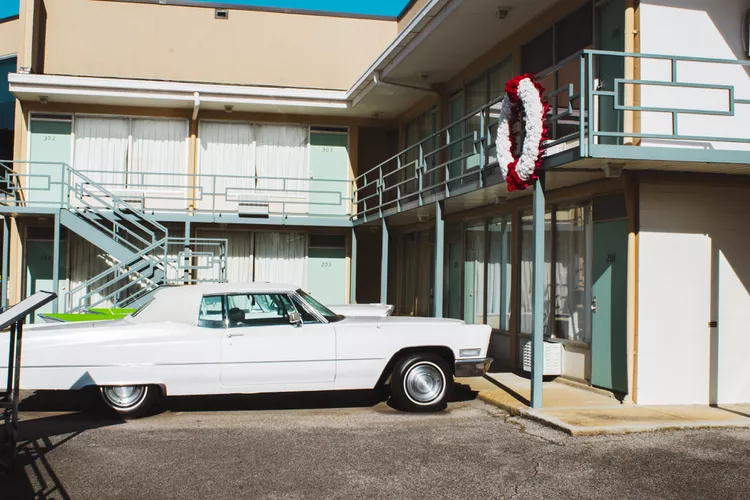Summary
450 Mulberry St, Memphis, TN 38103-4214, USA
Get directions
Phone +1 901-521-9699
Visit website
Museum Overview
The National Civil Rights Museum in Memphis is a world-renowned cultural attraction that draws thousands of visitors each year. This institution examines the civil rights struggles faced by our city and nation throughout history. Moreover, it highlights how these struggles continue in today’s world.
The museum holds special events on Martin Luther King Jr. weekend as well as throughout the year, attracting foreign dignitaries and other esteemed guests from around the globe.
The Lorraine Motel
Today, the National Civil Rights Museum is partially housed in the Lorraine Motel. However, the motel’s history is both short and tragic. It opened in 1925 and was originally a “white” establishment, but by the end of World War II, it became minority-owned. Consequently, Dr. Martin Luther King, Jr. stayed at the Lorraine when he visited Memphis in 1968, where he was subsequently assassinated on the balcony of his hotel room on April 4th of that year. Following his death, the motel struggled to remain operational, ultimately going into foreclosure by 1982.
Saving the Lorraine
With the future of the Lorraine Motel in jeopardy, a group of local citizens formed the Martin Luther King Memorial Foundation with a clear goal: to save the motel. The group raised funds, solicited donations, secured a loan, and partnered with Lucky Hearts Cosmetics to purchase the motel for $144,000 when it went up for auction. Thus, with assistance from the city of Memphis, Shelby County, and the state of Tennessee, sufficient funds were raised to plan, design, and construct what would ultimately become the National Civil Rights Museum.
The Birth of the National Civil Rights Museum
In 1987, construction began on a civil rights center within the Lorraine Motel. This center was designed to help visitors better understand the events of the American Civil Rights Movement. In 1991, the museum opened its doors to the public. Ten years later, ground was broken for a multi-million dollar expansion that would add 12,800 square feet of space, connecting the museum to the Young and Morrow building, as well as the Main Street Rooming House, where James Earl Ray purportedly fired the shot that killed Dr. Martin Luther King, Jr.
:max_bytes(150000):strip_icc():format(webp)/FA5A8334-c5c39ffd6e304557b715f9c06009bdc0.jpg)
Exhibits
The exhibits at the National Civil Rights Museum illustrate the chapters of the fight for civil rights in the United States, promoting a better understanding of the involved struggles. These exhibits traverse history, beginning with the days of slavery and extending through the 20th century fights for equality. Visitors can find photographs, newspaper accounts, and three-dimensional scenes depicting significant civil rights events such as the Montgomery Bus Boycott, The March on Washington, and the Lunch Counter Sit-Ins.
Renovation
In September 2016, the National Civil Rights Museum was re-opened after a $28 million renovation, marking its first since opening. This renovation introduced new films, oral histories, and interactive media to better engage the tech-savvy generation. Another notable addition was a 7,000-pound bronze statue named Movement to Overcome, which honors the individuals currently fighting for Civil Rights. Furthermore, new exhibits were opened across the street from the Lorraine Museum to explore these topics in greater depth.
Location and Contact Information
The National Civil Rights Museum is located in downtown Memphis at:
450 Mulberry Street
Memphis, TN 38103
Contact Information:
(901) 521-9699
or contact@civilrightsmuseum.org
Visitor Information
Hours:
Monday and Wednesday – Saturday: 9:00 a.m. – 5:00 p.m.
Tuesday: CLOSED
Sunday: 1:00 p.m. – 5:00 p.m.
*During June – August, the museum is open until 6:00 p.m.*
Admission Fees:
Adults: $15.00
Seniors and Students (with ID): $14.00
Children 4-17: $12
Children 3 and under: Free
Visitors should plan to spend at least two hours exploring the museum.




